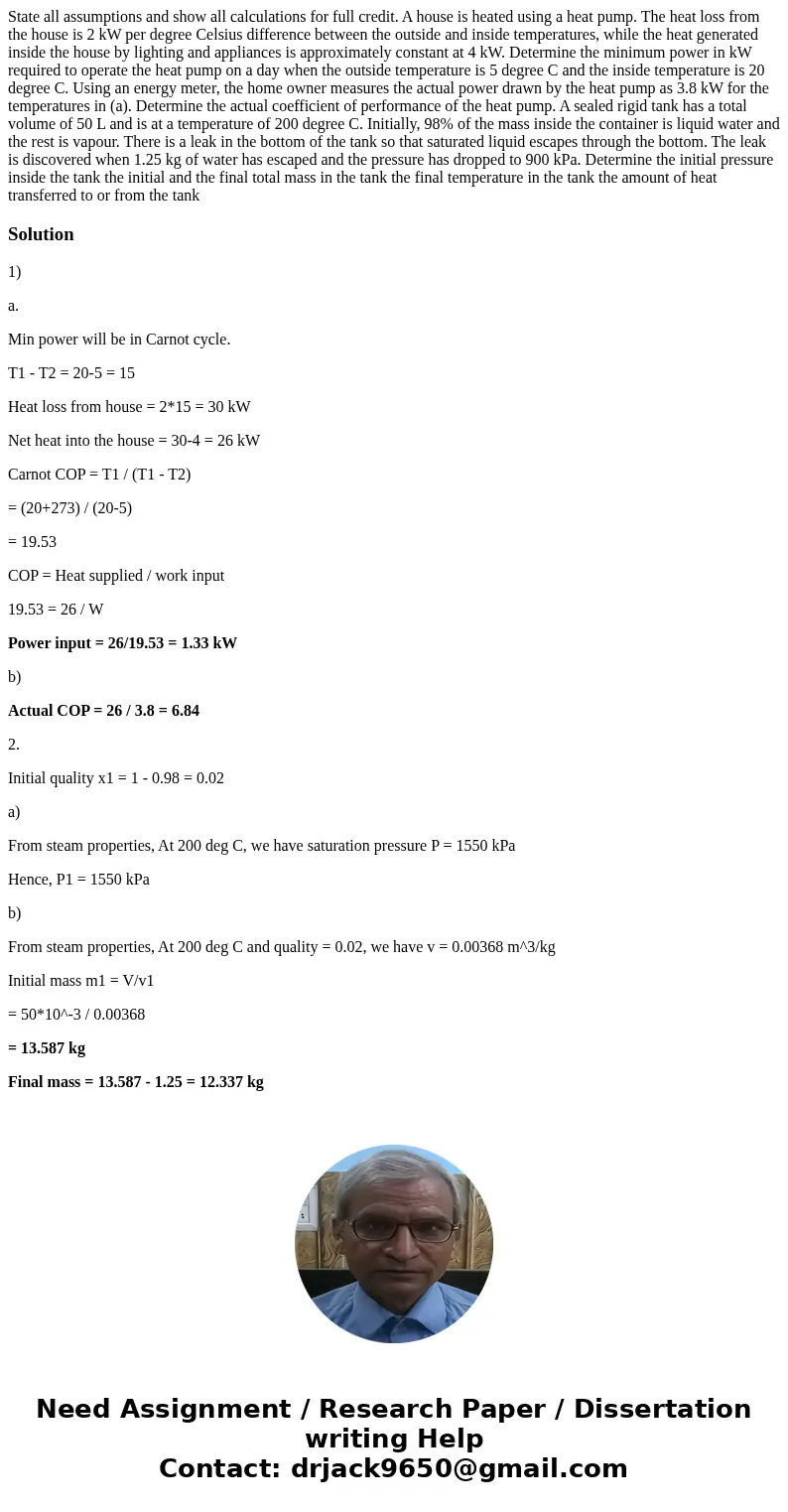State all assumptions and show all calculations for full cre
State all assumptions and show all calculations for full credit. A house is heated using a heat pump. The heat loss from the house is 2 kW per degree Celsius difference between the outside and inside temperatures, while the heat generated inside the house by lighting and appliances is approximately constant at 4 kW. Determine the minimum power in kW required to operate the heat pump on a day when the outside temperature is 5 degree C and the inside temperature is 20 degree C. Using an energy meter, the home owner measures the actual power drawn by the heat pump as 3.8 kW for the temperatures in (a). Determine the actual coefficient of performance of the heat pump. A sealed rigid tank has a total volume of 50 L and is at a temperature of 200 degree C. Initially, 98% of the mass inside the container is liquid water and the rest is vapour. There is a leak in the bottom of the tank so that saturated liquid escapes through the bottom. The leak is discovered when 1.25 kg of water has escaped and the pressure has dropped to 900 kPa. Determine the initial pressure inside the tank the initial and the final total mass in the tank the final temperature in the tank the amount of heat transferred to or from the tank
Solution
1)
a.
Min power will be in Carnot cycle.
T1 - T2 = 20-5 = 15
Heat loss from house = 2*15 = 30 kW
Net heat into the house = 30-4 = 26 kW
Carnot COP = T1 / (T1 - T2)
= (20+273) / (20-5)
= 19.53
COP = Heat supplied / work input
19.53 = 26 / W
Power input = 26/19.53 = 1.33 kW
b)
Actual COP = 26 / 3.8 = 6.84
2.
Initial quality x1 = 1 - 0.98 = 0.02
a)
From steam properties, At 200 deg C, we have saturation pressure P = 1550 kPa
Hence, P1 = 1550 kPa
b)
From steam properties, At 200 deg C and quality = 0.02, we have v = 0.00368 m^3/kg
Initial mass m1 = V/v1
= 50*10^-3 / 0.00368
= 13.587 kg
Final mass = 13.587 - 1.25 = 12.337 kg

 Homework Sourse
Homework Sourse